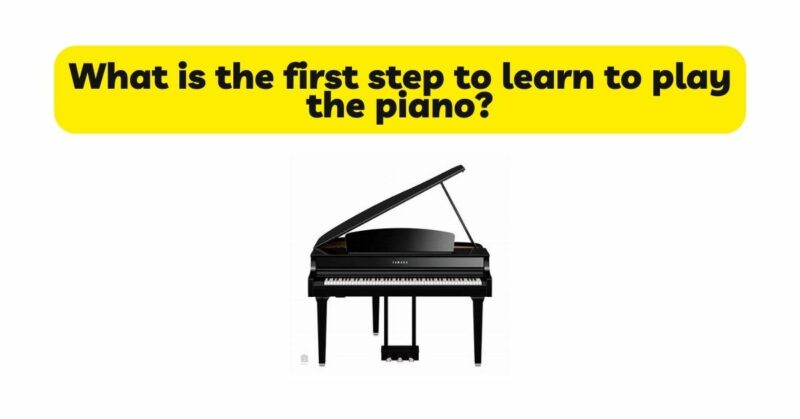Embarking on the journey to learn to play the piano is an exciting endeavor filled with musical possibilities. However, as a beginner, it’s crucial to start with the right first step to establish a strong foundation for future growth. In this article, we will explore the essential first step to learning the piano and provide guidance on how to lay the groundwork for a successful musical journey. By focusing on this initial step, you will set yourself up for a fulfilling and rewarding piano learning experience.
The First Step: Keyboard Familiarity
The very first step in learning to play the piano is to develop a strong sense of keyboard familiarity. Familiarizing yourself with the layout of the piano keyboard is essential for understanding its structure and unlocking its potential as a musical instrument. Here are the key aspects to consider:
- Identify the White and Black Keys: Start by understanding the distinction between the white and black keys on the piano. The piano keyboard consists of a repeating pattern of white and black keys. The white keys represent the natural notes (A, B, C, D, E, F, G) and the black keys represent the sharps and flats (A#/B♭, C#/D♭, D#/E♭, F#/G♭, G#/A♭).
- Learn the Layout of the Keys: The piano keyboard consists of a series of octaves. Each octave spans from one C to the next. Begin by locating the group of two black keys on the keyboard. The white key immediately to the left of this group is C. From there, you can easily identify the other white keys sequentially as you move to the right.
- Explore Octaves and Patterns: Once you have identified C, you can navigate the keyboard by recognizing the repeating pattern of white and black keys. Each octave consists of five black keys and seven white keys. By understanding this pattern, you can easily locate and play any note on the keyboard.
- Develop Hand-Eye Coordination: As you familiarize yourself with the keyboard, it’s essential to develop hand-eye coordination. Practice finding specific notes on the keyboard by looking at the sheet music and then transferring that visual information to your hands on the keys. This coordination between your eyes and hands is crucial for playing accurately and efficiently.
- Experiment with the Range: Explore the full range of the piano keyboard, from the lowest note (A0) to the highest note (C8). Play different notes and octaves to become comfortable with the keyboard’s range and sound. This exploration will help you develop a sense of the piano’s capabilities and its rich tonal palette.
- Utilize Visual Aids: To aid in the learning process, consider using visual aids such as piano diagrams or keyboard stickers. These tools can help you identify the notes and their positions on the keyboard, providing a visual reference as you begin to play.
- Practice, Practice, Practice: The key to solidifying keyboard familiarity is consistent practice. Set aside dedicated time each day to explore the keyboard, play scales, and practice finding specific notes. Regular practice will enhance your comfort and confidence on the keyboard, allowing you to progress more effectively in your piano learning journey.
Conclusion: Developing keyboard familiarity is the crucial first step in learning to play the piano. By understanding the layout of the keys, identifying the white and black keys, and exploring octaves and patterns, you will build a solid foundation for your musical growth. Remember to develop hand-eye coordination, experiment with the piano’s range, and utilize visual aids when needed. Through regular practice and dedication, you will gain confidence in navigating the keyboard and lay the groundwork for future piano skills. With this strong foundation, you will be well-equipped to embark on a fulfilling and successful journey toward mastering the piano.


